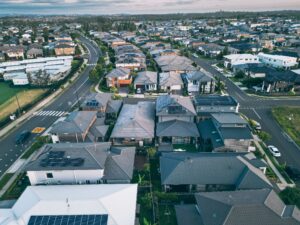ASX Dividends Are Shrinking — What Every Income Investor Needs to Know

For decades, Australian income-oriented investors have relied on the country’s share market to deliver reliable dividend streams — generous yields, franked credits and a sense that you could reasonably count on cash payments each year. But recently the taps have begun to drip rather than flow: average yields are shrinking, payouts are becoming more concentrated, and the old assumptions around dividend income are under pressure. If you’re someone building an income portfolio, seeking steady cash flow from shares, you need to face this new reality. This article takes a deep dive into what’s going on with dividends on the S&P/ASX 200 (ASX 200), why the landscape is changing and how you may want to adapt your approach.
What are the Best ASX stocks to invest in right now?
Check our buy/sell tips

What’s the Current Landscape of ASX Dividends?
A Yield that Has Shrunk
Historically, the ASX market has offered relatively high dividend yields compared with many developed markets. Research from S&P Dow Jones Indices shows that the trailing 12-month dividend yield for the S&P/ASX 300 as of 31 December 2024 was about 3.5% before imputation. The long-run average for this market has been closer to 4.0% to 4.5% per annum.
In more granular detail, Australian Taxation Office (ATO) data indicates that average dividend yields for companies paying dividends in Australia were around 3.83% in July 2024 and about 3.10% in December 2024.
The conclusion: yields are noticeably lower than their historic norm.
Payouts Are Becoming More Concentrated
Not only are average yields down, but the distribution of dividend payments is becoming narrower. A smaller number of companies are accounting for a larger share of the dividend pool. This concentration raises the risk profile for income investors: if one of the big payers cuts its dividend, the effect on income can be outsized.
The Franking Credit Cushion Isn’t as Strong as It Used to Be
Australia’s dividend imputation system (franking credits) has long been part of the draw-card for domestic income investors. But when the base dividends fall, the relative boost from franking is less able to offset the lower yield. According to ATO data, the franking (rebate) yield component was around 1.24% in May 2024, slightly lower than the year before.
So the two key bridges of dividend income, yield and franking, are both under strain.
Why Are Dividends Under Pressure?
Earnings & Cash-Flow Constraints
Many of the major dividend payers in Australia sit in sectors that are facing headwinds. The resources sector contends with volatile commodity prices, cost inflation and fluctuating global demand. The banking sector faces margin pressure, regulatory demands, elevated capital buffers and subdued growth. These pressures reduce the free cash flow available for dividends. Research by S&P DJI notes that while Australia had a “resilient dividend pool”, the contributions are heavily weighted to the financials and materials sectors.
Elevated Share Prices Diluting Yields
When share prices of dividend-paying companies rise, if dividend growth doesn’t keep pace, then yields fall even if the cash payout remains stable. Many ASX blue-chips have experienced upward share price momentum in recent years, which mechanically lowers yields.
Companies Retaining More for Growth or Safety
In an environment of higher interest rates, uncertain economic growth and elevated risks, companies may prefer to retain earnings rather than commit to generous dividends. That means fewer companies will distribute large portions of profit, reducing payout ratios and thereby lowering investor income.
Sectoral Shifts and Dividend Concentration
Because dividends are increasingly coming from fewer companies (and sectors), the overall yield for the broad market can suffer when those sectors pull back. For example, if one big miner reduces its payout due to commodity weakness, that directly impacts the aggregate dividend pool. Recent ASX 200 yields have hovered in the mid-3% range (around 3.5–3.6%), reflecting softer payouts from major banks and miners rather than a single cause.
Policy, Regulation and Imputation Dynamics
While not a dominant cause at present, changes to dividend imputation rules, tax policy or capital regulation could further influence company payout behaviour. Income investors must remain aware that the framing of dividends can change over time.
What This Means for Income-Focused Investors
Adjusting Yield Expectations
An income investor accustomed to yields of 4%–4.5% may find that the market now offers closer to 3.5% on average. If the ASX 200 yield sits around this mid-3% level, investors should not expect to replicate previous income levels without accepting higher risk or reallocating outside of the traditional Australian equity mainstream.
Prioritising Sustainability Over Just High Yield
When yields compress, the focus shifts: it’s less about chasing the highest yield and more about ensuring the dividend is reliable. Metrics such as dividend cover (earnings divided by dividend), payout ratio, cash flow strength, debt levels and sector outlook become crucial. A ‘safe’ 3% yield might be more worthwhile than a 5% yield from a weak company with vulnerable earnings.
Diversification Is More Important Than Ever
Given the increased concentration of dividends among fewer companies/sectors, relying on the traditional big-bank and resources mix may leave a portfolio exposed. Exploring other sectors, both domestically and internationally, helps mitigate sector-specific risk and could stabilise income streams.
Franking Credits Are No Longer the Safety Net They Once Were
With lower overall dividends, the franking credit boost means less in absolute dollar terms. Investors must assess after-tax/after‐imputation income carefully rather than relying on franking as a panacea for lower yields.
Considering Alternative Income Streams
In this environment, income investors may need to broaden their toolkit: looking at infrastructure trusts, REITs, hybrid securities, global dividend stocks, and perhaps fixed income or emerging asset classes. Each alternative comes with its own risk profile but may help supplement the income gap.
Re-thinking Portfolio Targets
If the previous income target stemmed from assumptions of higher yields, it may be time to revisit the maths. Accepting a lower yield, increasing capital invested, or combining income strategies with growth strategies might be necessary to hit desired cash-return goals while staying aligned to risk tolerance.
Strategic Responses to the New Dividend Climate
Be Selective Rather Than Broad-Sweep
Rather than simply holding an index with the expectation it will deliver sufficient income, a more refined approach may involve selecting companies with proven dividend track records, sustainable cover, prudent management and a stable business model. Screening for quality matters more than ever.
Consider Dividend-Focused ETFs with Due Diligence
For investors who prefer to outsource selection, dividend-focused exchange-traded funds (ETFs) can help capture yield, albeit still within the lowered-yield market. For example, some yield-oriented Australian ETFs show distribution yields of around 5% or more, but underlying sustainability must be checked.
Explore International or Alternative Income Assets
Domestic yields are under pressure, so looking beyond Australia may help. International dividend stocks, global infrastructure, high-yielding sectors abroad, or asset classes like corporate bonds might provide incremental income. Keep in mind currency risk, regulatory differences and valuation risk.
Re-assess Income versus Growth Trade-off
In a lower-yield environment, the trade-off between current income and potential future growth becomes more pronounced. Some companies may offer lower current dividends but stronger growth potential, thus potential future income or capital gains. The investor must balance the need for today’s cash versus tomorrow’s opportunity.
Maintain Vigilance for Yield Traps
With yields compressing, the temptation to reach for ‘cheap’ high-yielding stocks may increase. But high yield alone is not enough: if a company has weak earnings, heavy debt, or structural threats, the dividend may be cut. Careful analysis is necessary to avoid traps.
Monitor Tax & Franking Implications
As the dividend pool shrinks, after-tax income becomes more relevant. Investors should consider how franking credits, dividend timing, investment structuring and tax status affect net returns. What looks like a healthy yield gross may be substantially less net.
Recognising the Broader Shift in Dividend-Based Income
The dividend landscape in Australia is undergoing a meaningful change. Historically, Australian equities were considered a “go-to” for income-seeking investors because of relatively high yields and a reliable pool of generous payers. That dynamic is less robust today.
Lower yields, fewer but larger dividend-payers, increased reliance on a handful of sectors and structural pressures mean that building a reliable income portfolio is more complex. Investors must acknowledge that the yield “sweet spot” may no longer exist in the same form. Instead of simply expecting dividends to deliver, there is a need to incorporate a comprehensive portfolio strategy: income plus growth, domestic plus international, yield plus risk management.
It’s also important to recognise that companies are increasingly balancing payout versus reinvestment. Growth-oriented firms may favour retaining earnings, meaning less cash distributed today but potential future value creation. For the income-investor who also values stability and visibility of cash flow, this creates a tension: yielding now versus growing for later.
Finally, external forces such as taxation policy, regulation, global interest-rate dynamics and competitive pressures mean that the “safe assumption” of a generous dividend stream is no longer automatic. That does not mean dividends are dead or irrelevant, far from it, but the context has changed, and investors must adapt accordingly.
Key Takeaways for Income Investors
Australian dividend investors face a new reality where the once-reliable income stream from the ASX is under pressure. The average yield has fallen from the historical 4–4.5 per cent range to around 3.5 per cent, marking a structural shift rather than a temporary dip. With payouts increasingly concentrated in a small number of major companies, the income base is more fragile than before. For investors, this means yield alone can no longer serve as the primary compass for portfolio construction. The focus now must turn to sustainability, companies with strong cash flows, low gearing, and prudent payout ratios. Franking credits continue to offer an advantage but no longer provide a full cushion against falling distributions. Diversification across sectors and geographies, as well as an openness to alternative income assets such as infrastructure or high-yield ETFs, is crucial for maintaining stability. Those who reassess expectations, adapt strategies, and balance yield with capital growth potential are more likely to preserve and even enhance long-term income resilience.
Conclusion
The era of effortless dividend income from the ASX appears to be fading. A combination of lower earnings, higher costs, capital discipline, and evolving business priorities has redefined how Australian companies distribute profits. For investors who depend on dividends, the challenge is not insurmountable, but it demands a smarter, more analytical approach. The key is to prioritise sustainable payouts over headline yields, maintain diversification to cushion shocks, and remain flexible enough to integrate growth or alternative income sources. The dividend landscape has changed, but opportunity remains for those who stay informed and proactive. As global interest rates, corporate profits, and sectoral trends evolve through 2025 and beyond, income investors who keep adjusting their playbook will continue to find reliable streams of cash flow, even in a leaner yield environment.
FAQs
- Why are ASX dividends declining in 2025?
Dividends have fallen due to softer earnings in the banking and resources sectors, cost inflation, and companies retaining profits to strengthen balance sheets rather than distributing them to shareholders.
- Are dividend yields expected to recover soon?
Analysts suggest that while yields may stabilise, a return to historic 4–5 per cent averages is unlikely in the near term. Structural changes in payout behaviour are keeping yields subdued.
- How do rising share prices reduce dividend yields?
When share prices climb faster than dividend growth, the yield (dividend ÷ share price) falls even if the dollar value of the payout remains the same.
- What sectors still offer solid dividends on the ASX?
Despite the overall decline, select stocks in utilities, infrastructure, telecommunications, and some consumer staples still provide consistent dividends with sustainable payout ratios.
- Should investors rely on high-yield stocks?
High yields can be misleading. Some companies pay unsustainably high dividends relative to earnings, creating “yield traps.” Investors should assess financial strength before chasing high yields.
Blog Categories
Get Our Top 5 ASX Stocks for FY26
Recent Posts
Is Lendlease (ASX:LLC) out of the doldrums for good?
Lendlease (ASX:LLC) has for the past several years been the classic definition of a ‘value trap’. You think a good…
Here are the 2 most important stock market taxes that investors need to be aware on
As one of two certainties in life, investors need to be aware of stock market taxes. Investors may be liable…
Our 5 ASX Predictions for 2026!
This article outlines 5 ASX Predictions for 2026 that Stocks Down Under puts its neck on the line to assert…


